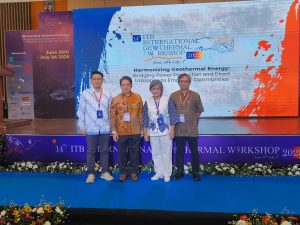Jakarta – The Ministry of Energy and Mineral Resources (MEMR) said as many as 13 coal-fired power plants (PLTU) will be retired gradually, and those that are still operating will adopt clean coal technology (CCT) to support efficiency and reduce emissions.
The move is carried out to implement Presidential Regulation (Perpres) No. 112 of 2022 on the Acceleration of Renewable Energy Development, which aims to reduce the use of coal to achieve the net-zero emissions (NZE) target.
“To maintain domestic energy supply, coal will still have an important role in our energy mix, but the move towards net zero will be supported by policies, investment, and environmentally friendly PLTU technology,” Minister of Energy and Mineral Resources Bahlil Lahadalia said in an official statement at the Coaltrans Asia 2024 event in Bali, Monday, September 9.
Within the framework of this policy, the government has developed a road map for the early retirement of 13 PLTUs. This retirement is carried out in stages, considering economic aspects and ensuring that there is no turmoil in the electricity supply or an increase in electricity tariffs that burdens the community.
Meanwhile, the government will implement CCT technology, including supercritical and ultra-supercritical technology, for PLTUs that are still operating. Currently, seven PLTUs in Indonesia have used this technology, with a total capacity of 5,455 MW. These include PLTU Cirebon (660 MW), PLTU Paiton 3 (815 MW), and PLTU Jawa 7 Unit 1 (1,000 MW).
“The application of clean coal technology is an important step in the energy transition while maintaining the resilience of the national electricity supply,” Bahlil added.
The government also plans to develop ultra-supercritical boiler technology in nine power plants in Java with a total capacity of 10,130 MW until 2028. This represents 37.43% of Indonesia’s overall coal-fired power plant development plan.
In addition to the adoption of CCT technology, the Ministry of Energy and Mineral Resources also encourages the application of cofiring, which is the mixing of coal fuel with biomass in PLTU. Indonesia has great potential in biomass development, especially from palm oil plantation waste. This step is believed to reduce emissions from coal power plants.
With almost 60 per cent, or around 91 gigawatts (GW), of Indonesia’s electricity supply coming from coal, Bahlil realises this transition must be made carefully. “We are committed to a fair and gradual energy transition, including protecting the welfare of workers and communities that depend on the coal sector,” Bahlil concluded.
This includes retraining workers, diversifying the local economy, and investing in new energy sectors that can replace the economic contribution of coal. (Hartatik)














